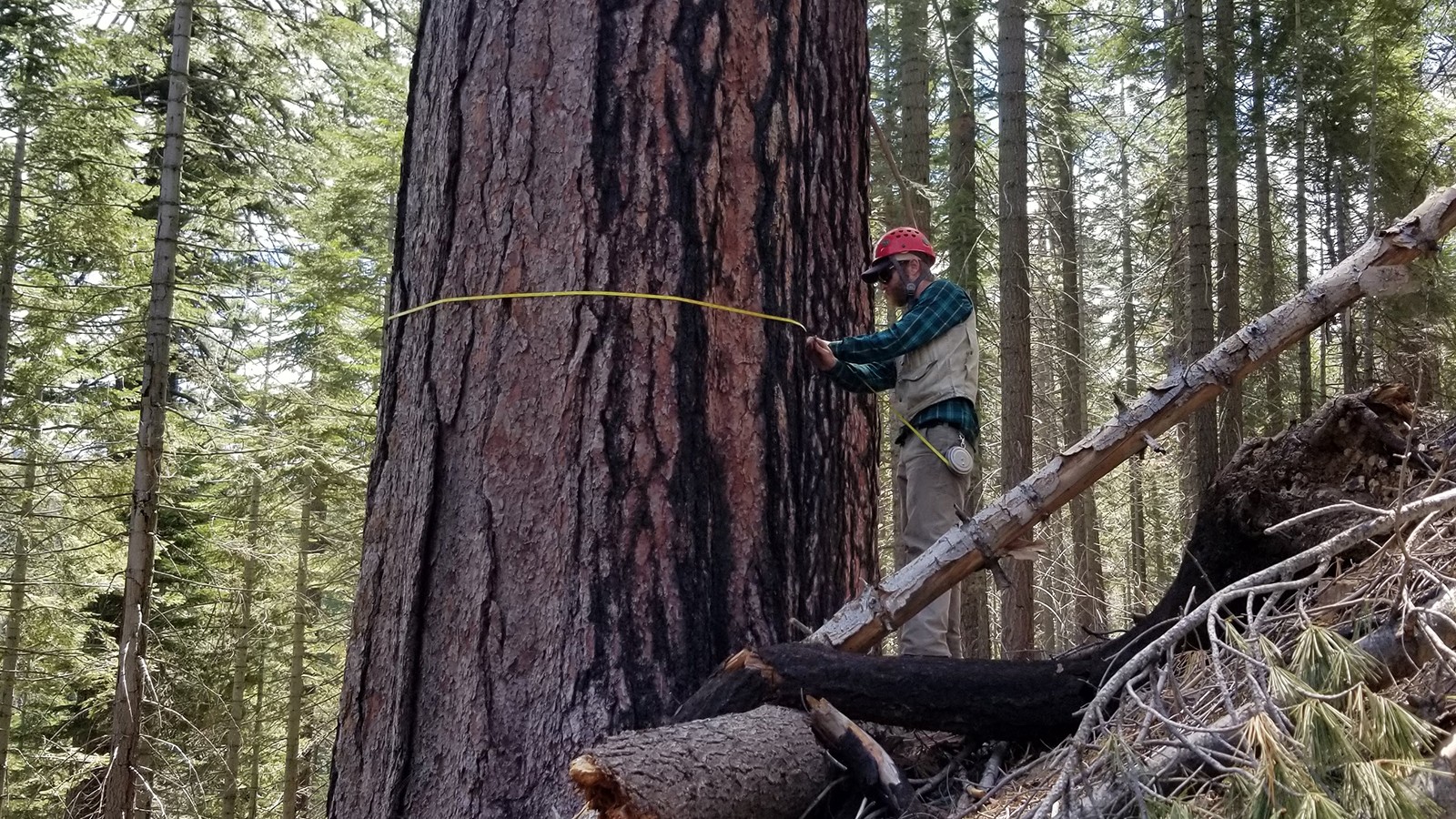Big News about Big Trees: QCNR Researcher Featured on NPR's Science Friday
By Lael Gilbert |
Research on big trees from a team led by Jim Lutz was featured on NPR's Science Friday, covering everything from the inherent awe humans find in old-growth forests to the ecological factors that keep big trees healthy. (Photo by Sara Germain)
Research from the Quinney College of Natural Resources deciphering the surprisingly complex and high-impact lives of forests’ largest residents hit the headlines recently on National Public Radio’s popular program Science Friday. The featured work comes from a team led by Jim Lutz, associate professor of Wildland Resources, and was carried by 400 public radio stations reaching an audience of more than 1.8 million listeners. Big trees certainly deserve that kind of attention, said Lutz.
“Big trees have a unique ecological role in every forest,” said Lutz, “one that people are really just beginning to appreciate.”
Lutz studies more than just massive redwoods or giant sequoia. He is interested instead in the largest trees in a given forest of any species—how these largest 1% of individuals survive to achieve their exceptional size, how they propagate, what ecological role they play, and if they come down, what factors contributed to their demise.
“Trees all over the west have been dying at higher rates than they used to from things like bark beetles, invasive pathogens, fire, and drought,” said Lutz. “All of these are being exacerbated by warming temperatures. If these deaths carry over to the largest trees, it would be alarming.”
The interview on Science Friday covered everything from the inherent awe humans find in old-growth forests to the ecological factors that keep big trees healthy.
Dr. Lutz’s team has explored, for instance, how a vast, interconnected network of fungi beneath the forest floor impacts a tree’s chances of survival. Trees offer products of photosynthesis to the fungi connected to their roots and the fungi enhance a plant’s nutrient uptake from the soil, shift nutrients between plants, regulate genetics to produce better-armed plants, and allow inter-plant communication. Big trees are able to fend off attacks from insects and disease more effectively when they are connected to this underground system, the researchers found.
Another unique finding from the team are likely shifts in forest structure in the aftermath of a climate change.
“Forests of the future will likely look different from those of the past,” said Lutz. “Trees will likely be more widely spaced.”
The team’s research found that in crowded forests trees were less tolerant of fire damage and were more susceptible to post-fire bark beetle attack. In more open forests, trees could tolerate higher levels of fire damage even when burned during extreme drought. Alleviating the stress that occurred when close neighbors competed for limited water resources let trees use sap to fend off beetle attacks and helped them heal after fire.
“People all around the world have found a deep connection with big, old trees,” said Lutz. “Trees are one of the few things that live so much longer than we do. Our lifespan is only a small fraction of theirs. With our limited perspective, it might look like they never change. But if we watch enough trees over enough time, we are able to track how dynamic these giants really are.”
WRITER
Lael Gilbert
Public Relations Specialist
Quinney College of Natural Resources
435-797-8455
lael.gilbert@usu.edu
CONTACT
Jim Lutz
Professor
Department of Wildland Resources
435-797-0478
james.lutz@usu.edu
TOPICS
Research 877stories Environment 263stories Plants 186stories Ecology 173stories Wildland 97storiesComments and questions regarding this article may be directed to the contact person listed on this page.







